Find out which 12 companion plants work best with tomatoes!
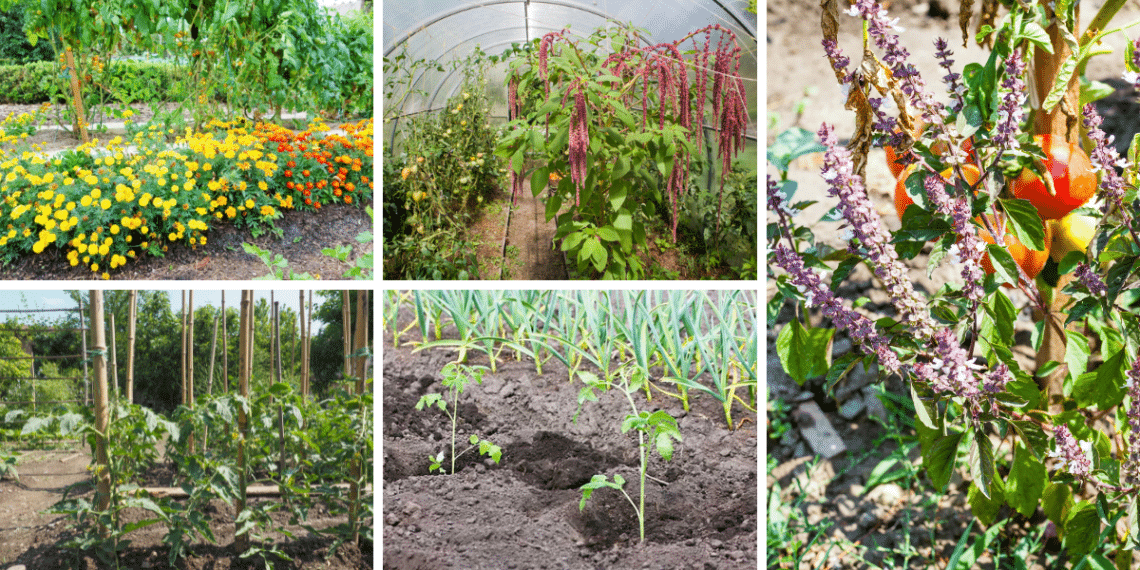
Growing tomatoes in a vertical space can be challenging, especially if you’re unsure about yield expectations.
However, you can maximize your garden’s potential by intercropping—growing plants beneath your tomatoes. Intercropping offers numerous benefits, such as enhancing soil quality, improving pest control, and increasing overall yield.
Companion planting is a simple and effective way to maximize your tomato harvest while protecting the soil for long-term success.
Below, we’ll explore the best plants to grow under tomato plants and the advantages they provide.
What is Companion Planting?
Companion planting, also known as intercropping, involves growing multiple plant species together to optimize space, improve plant health, and prevent pest infestations.
By strategically placing crops, you can enhance soil diversity, reduce weed growth, and improve access to water and nutrients.
Why Companion Planting Works:
- Maximizes space by using vertical and horizontal planting techniques
- Reduces the risk of pests and diseases through natural repellent properties
- Prevents soil erosion and preserves moisture
- Enhances soil fertility with nitrogen-fixing plants
While companion planting has many advantages, it’s essential to choose the right plants. Some plants work well with tomatoes, while others should be avoided due to competition for resources.
12 Plants to Grow Under Tomato Plants
1. Herbs – Boost Growth and Flavor
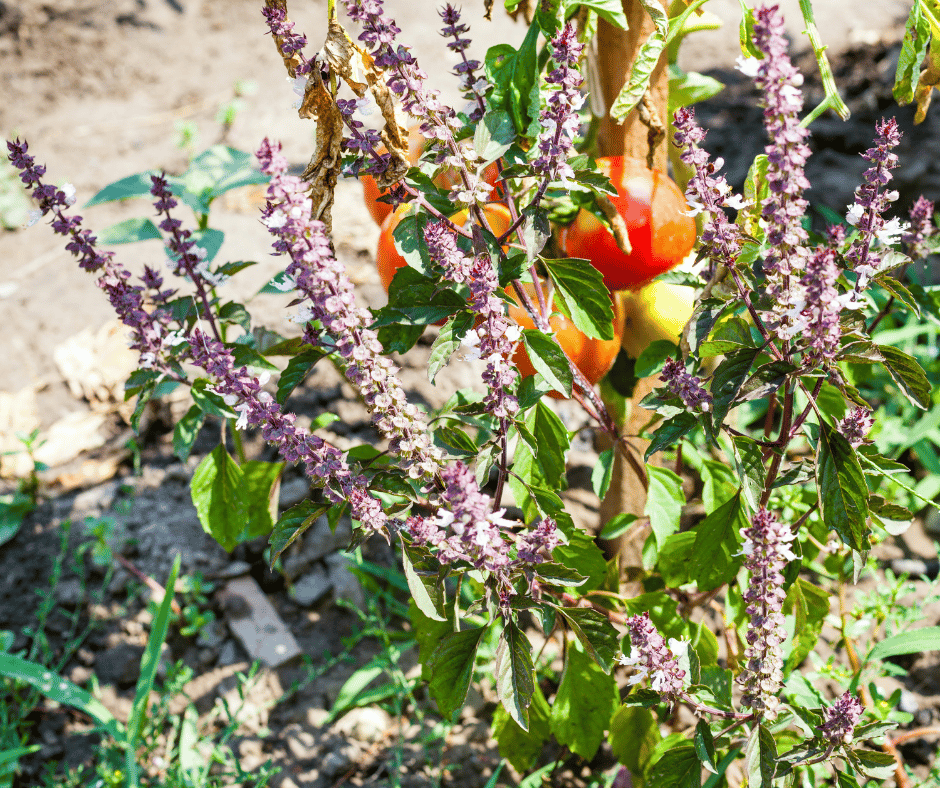
Herbs are low-maintenance and don’t compete with tomatoes for sunlight, water, or nutrients. Some excellent choices include:
- Basil – Enhances tomato flavor and repels pests like mosquitoes and whiteflies
- Parsley & Sage – Adds culinary value and attracts beneficial insects
- Oregano & Dill – Deters harmful pests (harvest dill early to prevent competition)
- Chives – Provides a fragrant boost and keeps aphids away
2. Groundcovers – Protects Soil and Prevents Weeds

Most groundcovers thrive under tomato plants, including:
- Marjoram & Oregano – Natural weed suppressants
- Creeping Thyme – Retains soil moisture
- Sweet Alyssum – Attracts pollinators
3. Lettuce – A Living Mulch
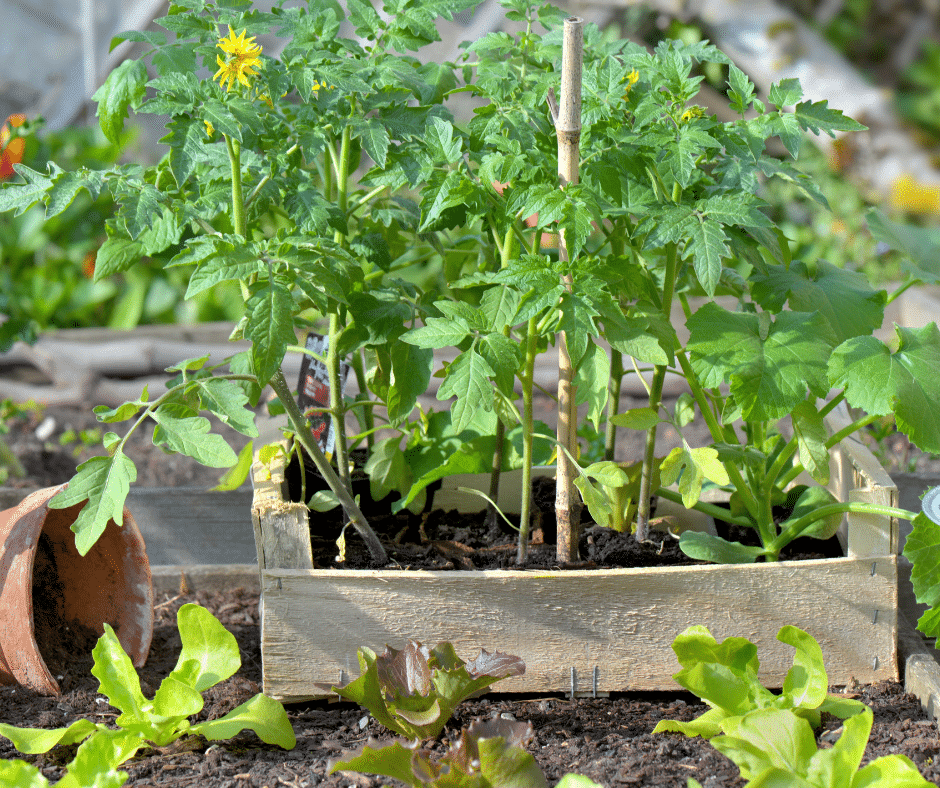
Lettuce thrives in the shade of tomato plants, helping to:
- Retain soil moisture
- Suppress weed growth
- Reduce disease spread
4. Beans – Nitrogen Boost for Soil
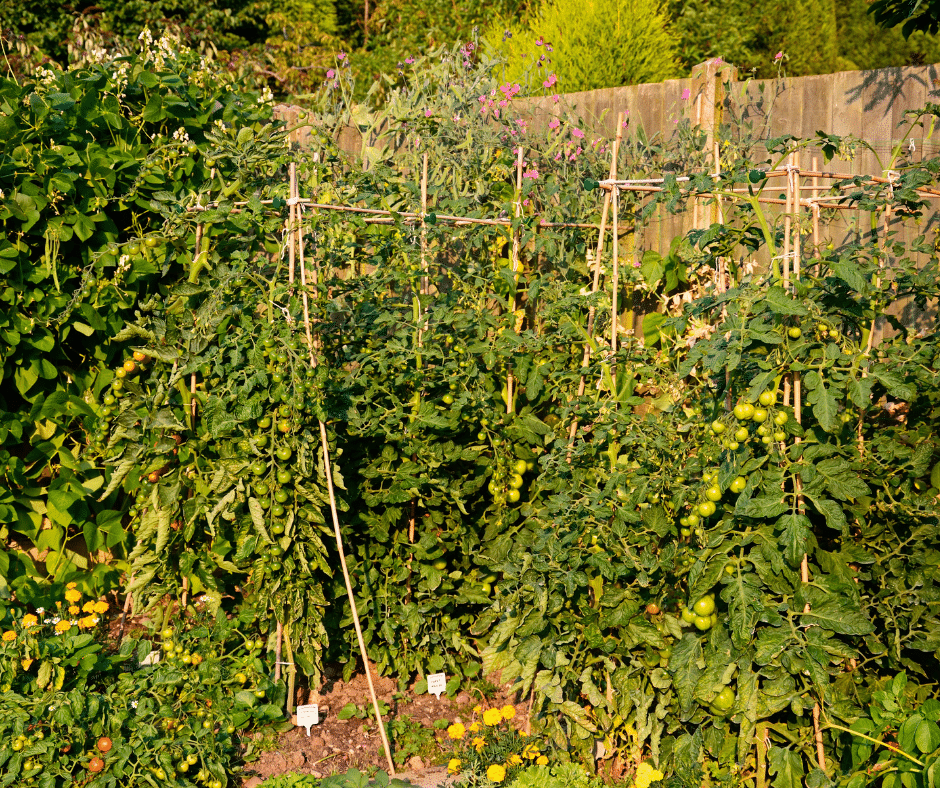
Beans are a great companion for tomatoes because they:
- Improve soil nitrogen levels
- Reduce the need for chemical fertilizers
- Provide a vertical and bushy balance in the garden
Tip: Grow bush beans near tomatoes for maximum benefits.
5. Radishes – Keeps Soil Cool

Radishes thrive in cooler temperatures, making them ideal for intercropping with tomatoes. They also help:
- Prevent soil compaction
- Deter certain pests
6. Root Vegetables – Space-Saving Nutrient Boosters

Growing carrots, beets, and turnips under tomato plants is beneficial as they:
- Break up compacted soil
- Absorb excess nitrogen (which tomatoes don’t need in excess)
- Provide extra nutrients for soil health
7. Flowers – Natural Pest Deterrents
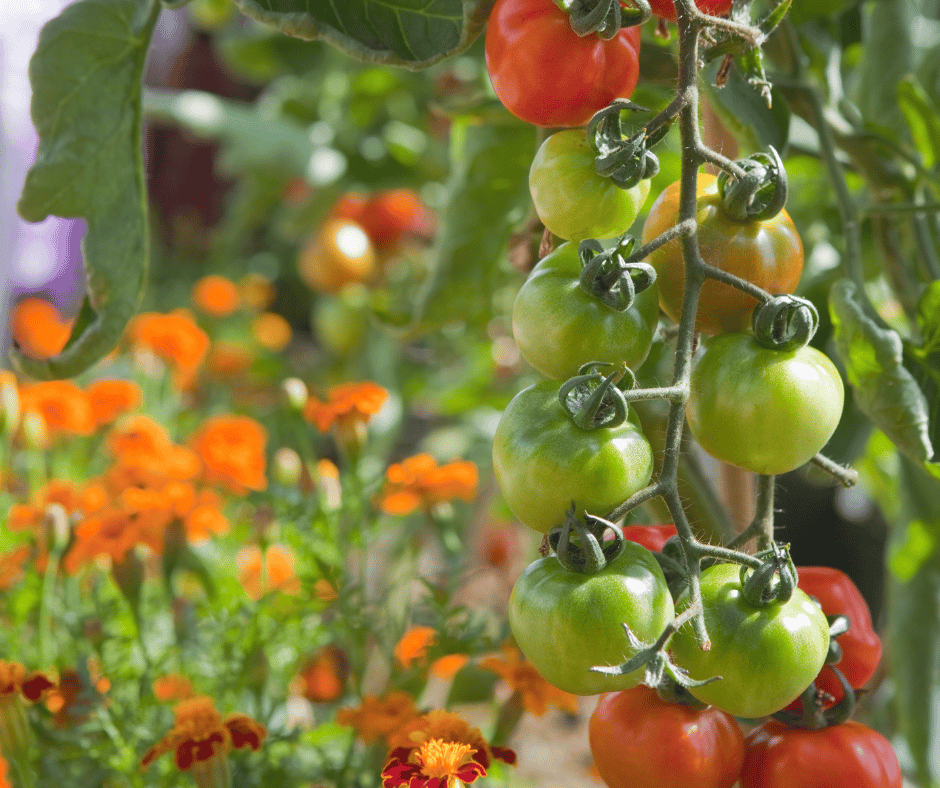
Flowers enhance biodiversity and repel pests that target tomato plants. Consider growing:
- Marigolds – Repels nematodes and tomato hornworms
- Violas & Pansies – Adds color while requiring minimal sunlight
- Roses & Tomatoes Together? – Roses benefit from tomato vines climbing their stems, protecting them from black spot
8. Onions – A Low-Maintenance Companion
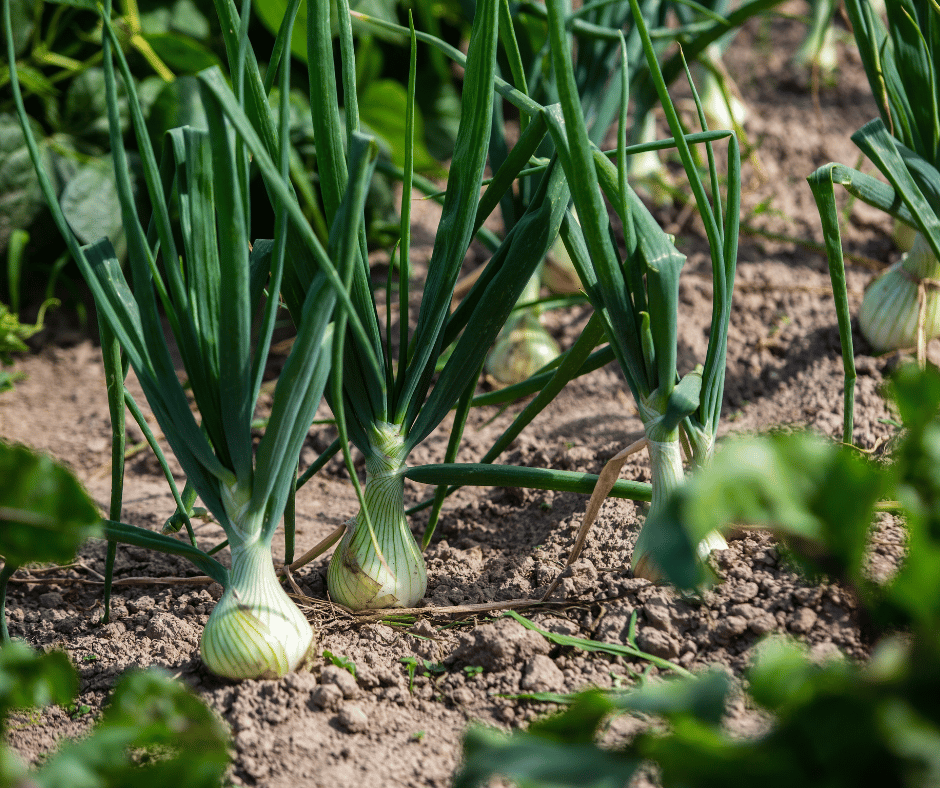
Onions are excellent for deterring aphids and boosting soil nutrients without competing for space or airflow.
9. Garlic – A Natural Pest Repellant
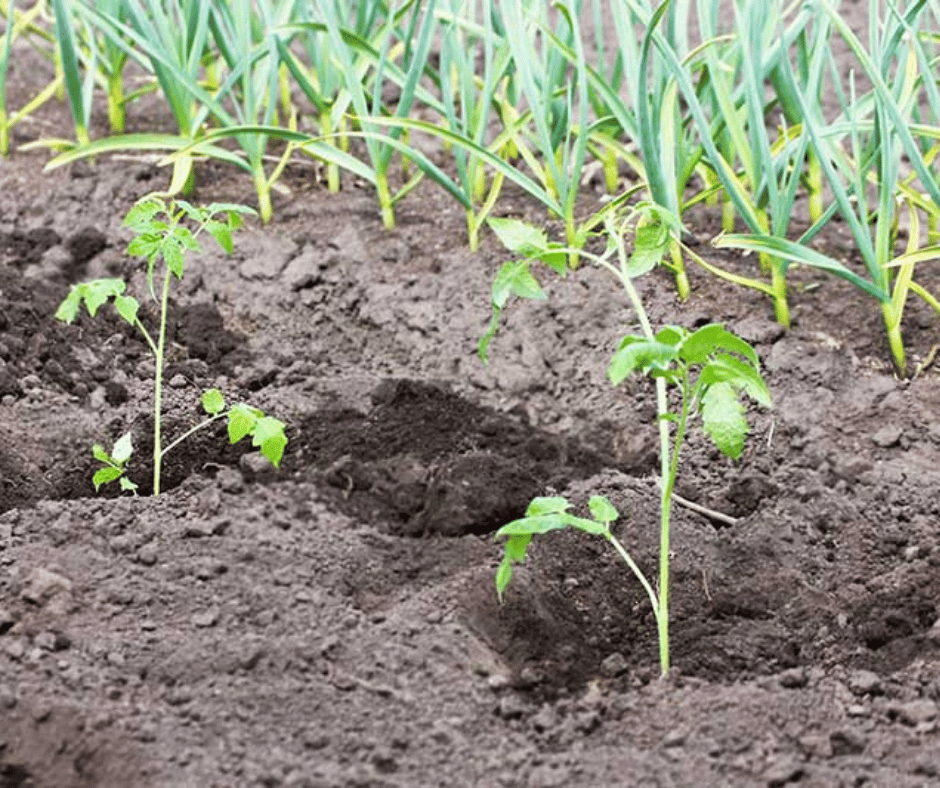
Garlic is known for:
- Repelling spider mites and aphids
- Reducing fungal infections like late blight
It takes up minimal space, making it perfect for underplanting.
10. Amaranth – A Bug Barrier
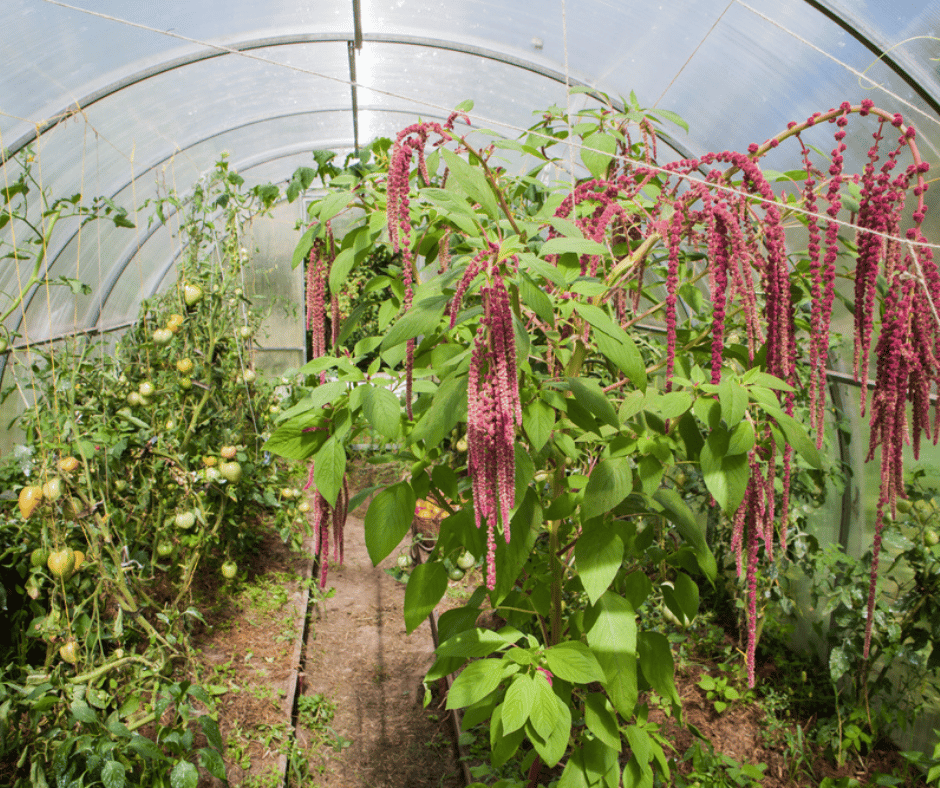
Amaranth serves as a natural pest repellent, deterring insects while thriving in minimal space.
11. Borage – Protects Against Tomato Pests
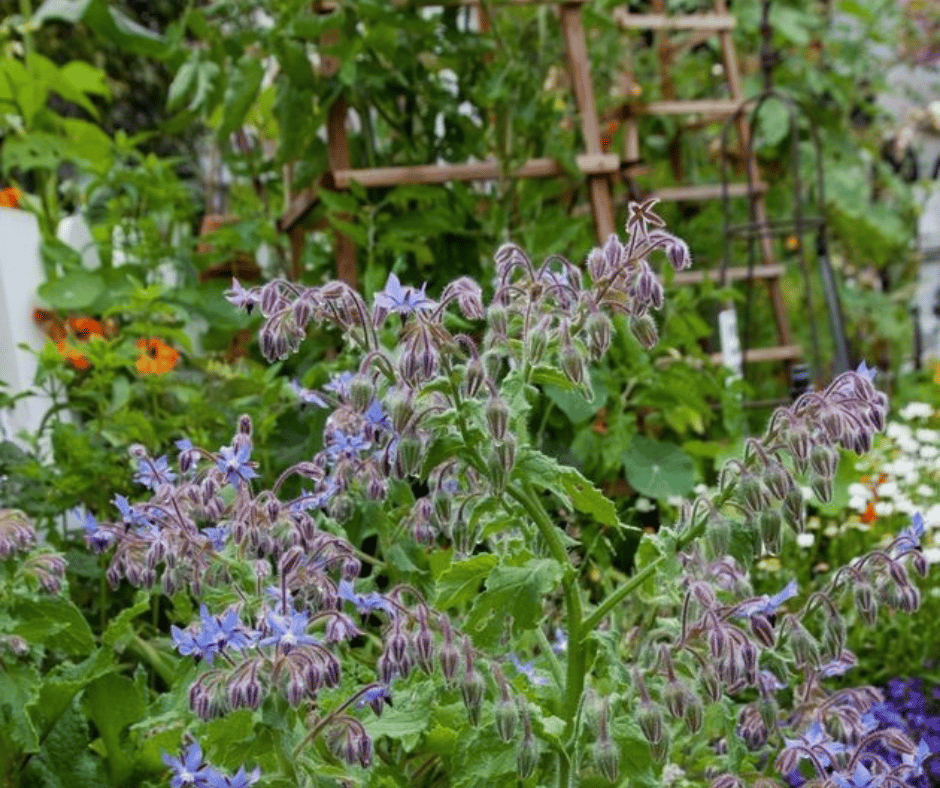
Borage acts as a natural repellent for tomato hornworms while attracting beneficial pollinators.
Bonus: Borage leaves can also be added to salads!
12. Asparagus – A Perennial Partner
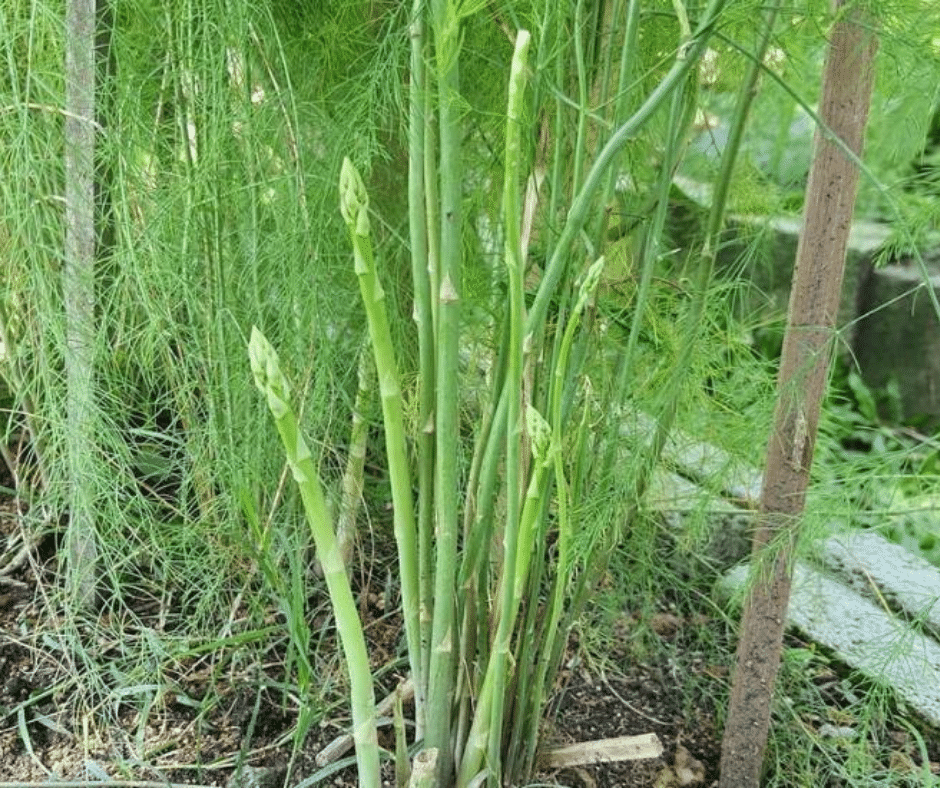
Asparagus and tomatoes protect each other:
- Asparagus fights off nematodes that damage tomato roots.
- Tomatoes deter asparagus beetles.
This win-win relationship keeps both plants healthy year after year.
How to Choose the Right Plants to Grow With Your Tomatoes
When selecting companion plants, consider:
- Sunlight Needs – Herbs and leafy greens thrive in partial shade from tomato plants.
- Growth Type – Bushy tomatoes work best with low-growing plants.
- Nutrient Balance – Avoid plants that compete heavily for the same resources.
Plants to Avoid Under Tomatoes:
- Potatoes – Increase blight risk
- Corn – Attracts tomato fruit worms
- Cabbage & Broccoli – Competes for nutrients
- Fennel – Inhibits tomato growth
By incorporating companion plants under tomato plants, you can maximize garden space, reduce pests, and improve soil health.
Whether you grow herbs for flavor, flowers for pest control, or vegetables for efficiency, this method ensures a bountiful and sustainable harvest.





